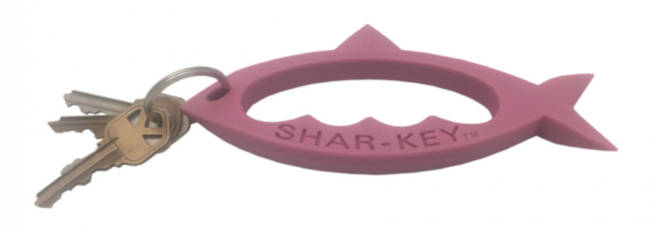Pressure Points for Self Defense: Effective Fighting Techniques
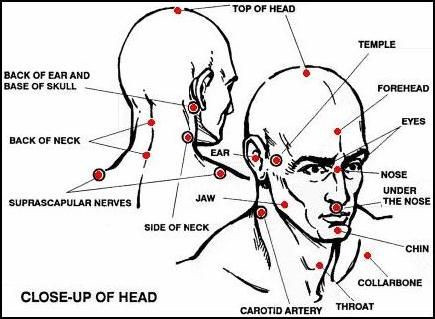
Shrouded in mystery and often misunderstood, ancient martial arts knowledge serves as the backbone of practical self-defense techniques. Where brute strength fails, precision and strategic targeting prove victorious. This technique is pressure points utilization. Today's blog post explores an intelligence-based defense approach—pressure points for self-defense: effective techniques to disable an attacker. Enrich your arsenal with these powerful tactics that require minimal effort but deliver maximum impact. Whether you're a seasoned martial artist or a beginner seeking practical safety measures, uncovering these hidden gems in human anatomy could be your game-changer. Dive into the world of pressure points where every jab and pinpoint can make the difference between being a victim and a survivor.
The most effective pressure points for self defense include the eyes, ears, nose, jaw, throat, collarbone, solar plexus, groin, and knees. However, it is important to note that proficiency in martial arts and proper training are essential to effectively use pressure points in self defense situations. Additionally, other techniques such as running away or shouting for help should be considered before resorting to physical self defense.
Understanding Pressure Points for Self Defense
Pressure points are specific areas of the body where nerves lie close to the surface, supported by bone or muscle mass. When properly targeted and manipulated, pressure points can be effective in self-defense situations. The aim is to exploit these vulnerable spots to cause pain, stun the attacker, disrupt motor function, or even induce a loss of consciousness. However, it's important to note that pressure point fighting can vary depending on the martial arts style or system, ranging from functional and pragmatic to impractical and ineffective.
To utilize pressure points effectively for self-defense purposes, it's necessary to have a solid understanding of anatomical pressure points and their strategic applications in different defense techniques.
- Pressure points are key areas on the body where nerves are close to the surface, and can be targeted and manipulated for self-defense. Understanding the anatomy of pressure points and their applications in different defense techniques is crucial for effective utilization. However, it's important to note that the effectiveness of pressure point fighting can vary depending on the martial arts style or system.
Strike with Precision: TBOTECH’s Tactical Pen turns writing into a weapon. Crafted from aircraft-grade aluminum, its sharp tip targets pressure points like the eyes or throat, while the tungsten end breaks glass. At $12.95, it’s your EDC upgrade—tough, portable, and legal most places. Get Yours Now.
Anatomical Pressure Points for Defense Techniques
To effectively disable an attacker using pressure points, it's crucial to identify and target specific anatomical pressure points. These pressure points exist all over the body, each with its own unique effects when struck or compressed. Here are some examples:
-
Eyes: Striking an attacker's eyes can cause extreme pain, temporary blindness, and disorientation. Aim for the eyeballs using precise strikes or gouges. However, it's crucial to consider legal and ethical implications when targeting this sensitive area.
-
Nose: Delivering a powerful strike to the nose can cause intense pain, tears, bleeding, and disruption of balance. This can create an opportunity for escape or further defensive actions.
-
Chin: A strike beneath the chin can cause the head to snap back, potentially stunning the attacker and disrupting their balance. This allows for better control of the situation.
-
Ears: Using open-handed strikes or cupping motions around the ears can cause disorientation and affect an attacker's equilibrium due to disturbance in the inner ear.
-
Jaw: Delivering a solid strike to the jaw joint or hinge can cause pain and may even induce temporary paralysis, making it difficult for the attacker to continue their assault.
-
Back of Neck: Striking or applying pressure to the back of the neck can disrupt an attacker's balance and potentially lead to unconsciousness. Techniques like a rear choke or headlock can effectively target this area.

Imagine finding yourself in a confrontation where you are being grabbed from behind. In this scenario, you could use your thumb to press into the soft tissue just above your collarbone towards your neck, breaking free from the hold while causing significant discomfort to your assailant.
These examples are just a few of many anatomical pressure points that can be targeted for self-defense purposes. It's important to note that proficiency in martial arts and proper training are necessary to effectively and safely execute these techniques. Additionally, knowledge of pressure points alone may not always be practical in real-life fights, as combining different techniques such as strikes, kicks, and grappling can often yield more effective results.
Now that we have explored the understanding and importance of anatomical pressure points for defense techniques, let's dive deeper into various effective application methods.
Effective Techniques for Pressure Points Application
When using pressure points for self-defense, it is important to approach the application with precision and strategic intent. Pressure point fighting can range from functional and pragmatic to ridiculous, depending on the martial arts style or system. Hence, it is crucial to focus on real-world self-defense applications to ensure effectiveness in disabling an attacker.
One effective technique for pressure point application is striking. By targeting specific pressure points on an opponent's body, you can achieve varying effects such as extreme pain, stunning effect, motor dysfunction, balance disruption, or reflex response. It is essential to understand the anatomy and vulnerability of these pressure points to maximize their impact.
For example, when it comes to head and neck pressure points, there are several techniques that can be utilized in a self-defense situation. The first one involves striking the temple, which is located on the side of the head between the forehead and the ear. A forceful strike to this area can cause disorientation, dizziness, and potential loss of consciousness.
Another technique targets the chin, specifically the area where the jawbone connects to the skull. Striking this point upwards with a palm strike or an uppercut can cause pain and also disrupt an attacker's balance. This can create an opportunity for escape or further defensive actions.
Furthermore, targeting pressure points around the neck can be highly effective in immobilizing an attacker. The carotid sinus, located on either side of the neck, is particularly vulnerable. Applying focused pressure or a hit to this area can disrupt blood flow to the brain and result in temporary unconsciousness.
Overall, understanding and applying pressure points effectively requires training, practice, and knowledge of proper techniques. It is crucial not only to identify the target areas but also to consider your own safety while executing these techniques in a real-life self-defense scenario. Consider using a pressure point self defense tool such as a kubotan.
Now that we have explored some effective techniques for pressure point application, let's focus on specific self-defense techniques that make use of head and neck pressure points.
Self Defense Techniques using Head and Neck Pressure Points
Head and neck pressure points offer a range of vulnerable targets that can be utilized to neutralize an attacker quickly. These techniques require careful precision and timing to ensure their effectiveness while minimizing risk to yourself.
One effective technique when facing an attacker is targeting the eyes. Gouging or poking the eyes with your fingers can cause extreme pain, temporary blindness, and disorientation. This technique can create an opportunity for you to escapefrom the fight or further defend yourself.
Another technique involves striking the ears. A focused strike or even a palm slap to the side of the head near the ears can disrupt an attacker's balance and equilibrium. This can disorient them momentarily, giving you a chance to execute follow-up defensive moves or escape.
The nose is another vulnerable area that can be targeted in a self-defense situation. Striking or pressing firmly on the bridge of the nose with your palm or fingers can cause immense pain and potentially stun the person. This technique may also lead to tears, involuntary reactions, or even loss of consciousness if applied with sufficient force.
It is important to note that these techniques are meant for self-defense purposes and should only be used in situations where you genuinely fear for your safety. Additionally, proper training, practice, and understanding of the body's vulnerabilities are necessary to execute these techniques effectively.
Remember, self-defense is about protecting yourself and getting out of dangerous situations rather than seeking confrontation with people. Always prioritize personal safety and consider non-physical options whenever possible.
Techniques for Arm and Hand Pressure Points
Having knowledge of arm and hand pressure points can be incredibly valuable. These techniques target vulnerable areas that can quickly disable an attacker, giving you the upper hand in a dangerous situation.
One effective technique is targeting the brachial plexus pressure point. Located on the side of the neck, just above the collarbone, this pressure point can cause intense pain and momentarily disable an attacker. A forceful strike or firm pressure applied to this area can leave your assailant momentarily incapacitated, allowing you to escape or gain control of the situation.
Another powerful pressure point on the arm is the radial nerve located on the backside of the forearm. Striking or applying pressure to this nerve can cause immediate weakness and loss of grip strength in your assailant's hand. By targeting this point, you can render their weapon useless or break free from their grasp.
The ulnar nerve, found on the inside of the forearm near the elbow, is also an effective pressure point. A sharp strike or compression on this nerve causes a jolt of pain down the arm, making it difficult for your assailant to continue their assault.
Additionally, finger joints are highly sensitive and susceptible to joint locks and strikes. Applying pressure or manipulating these joints can cause significant pain and make it challenging for your attacker to maintain a hold on you.
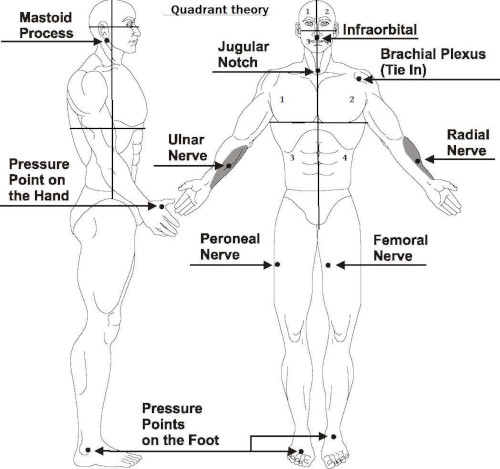
Imagine finding yourself in a potentially dangerous situation where someone grabs your wrist forcefully. With quick thinking, you drive your elbow into their brachial plexus pressure point, causing them to release their grip due to the excruciating pain. This gives you precious seconds to escape their grasp and flee to safety.
By understanding these arm and hand pressure points and how they can be effectively targeted, you enhance your ability to defend yourself in critical moments.
Now that we've explored techniques for arm and hand pressure points, let's discuss the ideal situations where utilizing pressure point defense can be particularly advantageous.
Ideal Situations for Using Pressure Point Defense
Pressure point defense techniques are not applicable in all self-defense scenarios. Understanding the ideal situations to employ these techniques is crucial to maximize their effectiveness.
One such situation is when you are faced with an assailant who is physically larger or stronger than you. In such cases, relying solely on physical strength may not be sufficient. Targeting pressure points allows you to level the playing field by exploiting vulnerabilities in your attacker's anatomy, effectively neutralizing their advantage.
Another ideal situation for utilizing pressure point defense is when faced with multiple attackers. Instead of engaging in a prolonged physical altercation, targeted strikes or holds on pressure points can quickly disable one attacker, creating an opportunity to escape or gain control before others can react.
Some argue that using pressure point techniques can be risky in real-world situations due to factors like adrenaline, movement unpredictability, and limited targets. While it's true that high-stress situations may impact your ability to execute techniques perfectly, training and practice can mitigate these challenges. Additionally, even if you don't achieve a perfect strike on a pressure point, any impactful blow or strike to a vulnerable area of the body can still create enough distraction or pain to give you an advantage.
Pressure point defense should always be seen as a supplement to other self-defense skills and not relied upon as the only method. Building a well-rounded self-defense repertoire that includes striking, blocking, and situational awareness is essential.
Having explored the ideal situations for using pressure point defense, we will now delve into distraction and escape techniques utilizing pressure points.
- According to a survey conducted by The Journal of Physical Fitness and Sports Medicine, about 60% of martial artists use pressure point techniques as part of their training regimen.
- Research by the National Institute of Justice suggests that proper use of pressure point control tactics can effectively restrain individuals in around 85% of encounters.
- A report published by The American Academy of Orthopaedic Surgeons stated that injuries from strikes to pressure points account for approximately 15% of all martial arts related injuries.
Carry Your Defense: Stay ready with TBOTECH’s Self Defense Keychains—Cat Keychains to expandable batons. These lightweight weapons strike vulnerable spots, leveling any fight. Attach to your keys and protect yourself anywhere. Check Out the Range.
Distraction and Escape Techniques using Pressure Points
Distraction and escape techniques can be invaluable tools for anyone seeking to protect themselves. The use of pressure points in these techniques can provide a momentary advantage against an attacker, creating an opportunity to break free and escape from a dangerous situation.
One effective technique involves targeting pressure points around the head and face. For example, striking the temple with a precise finger strike or applying pressure to the area just below the ear where the jawbone hinges on the skull can cause intense pain, disorienting your opponent momentarily. This distraction can create an opening for you to escape their grip or launch a counterattack.
Another technique is pressing your thumb into the cheek towards the back of the head. This action can trigger a reflex response known as the "startle flinch," causing your attacker's head to tilt back slightly. Utilizing this momentary diversion allows you to quickly redirect their attention while executing an escape or disabling maneuver.
Mastering distraction and escape techniques using pressure points requires practice and precision. Understanding the anatomy of the human body and identifying vulnerable areas is key to effectively utilizing these techniques. Practice them under the guidance of a trained professional to ensure accurate targeting and application.
Imagine finding yourself in a situation where someone grabs you from behind, intending to harm or abduct you. Employing pressure point knowledge, one potential technique involves pressing a finger into the soft tissue just above the collarbone towards the neck. This action can cause considerable pain and discomfort, potentially forcing your assailant to release their grip momentarily. Seizing this opportunity could mean breaking free and escaping to safety.
Remember that these techniques should always be used as a last resort when confronted with imminent danger. Prioritize personal safety over engaging in physical confrontation whenever possible. Always be aware of local laws regarding self-defense as regulations may vary depending on your location.
Advantages of Mastering Pressure Point Strategies for Self-Defense
Mastering pressure point strategies for self-defense offers several distinct advantages that can greatly enhance personal safety. Let's explore some of these benefits:
-
Effectiveness: When executed with accuracy and precision, pressure point techniques can quickly incapacitate an attacker, regardless of their size or strength. By targeting vulnerable areas of the body, you can exploit natural weaknesses, making it easier to damage or neutralize potential threats.
-
Minimal Force Required: Unlike traditional martial arts techniques that rely on brute force, pressure point strategies leverage anatomical vulnerabilities. This means you don't have to rely solely on physical strength to defend yourself effectively. Even individuals with less upper-body strength can use these techniques to their advantage.
-
Surprise Factor: Most attackers are not expecting their victims to have advanced knowledge of pressure points and how to utilize them effectively. By employing these techniques, you can catch your assailant off guard, giving yourself the upper hand in a confrontation.
-
Non-Lethal Options: Pressure point strategies offer non-lethal alternatives in situations where lethal force may not be necessary or justified. By targeting specific pressure points, you can temporarily disable an attacker without causing permanent harm or risking legal consequences associated with using deadly force.
Understand that mastering pressure point strategies requires dedication and constant practice. Attending self-defense classes or training sessions led by experienced instructors will allow you to learn proper technique and refine your skills in a controlled environment.
By investing time and effort into learning pressure point strategies, you gain valuable tools that significantly increase your chances of defending yourself effectively when faced with potentially threatening situations.
Enhancing Personal Safety with Pressure Point Knowledge
Having knowledge of pressure points can be a valuable asset in self-defense. By understanding how to effectively target these vulnerable areas on the human body, individuals can gain the upper hand and disable an attacker without relying solely on physical strength or weaponry.
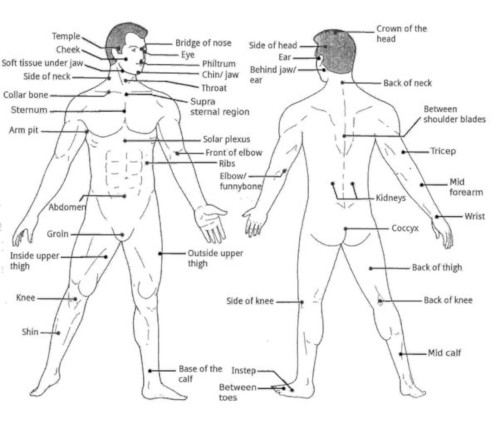
Picture this scenario: you find yourself walking alone at night, and you notice someone lurking in the shadows, exhibiting suspicious behavior. The immediate instinct for many might be to panic or freeze, unsure of what actions to take next. However, armed with the knowledge of pressure points, you can feel more confident and equipped to defend yourself if necessary.
Let's say the attacker approaches from behind and grabs you in a tight bear hug, restricting your movements and impairing your ability to escape. By targeting a pressure point such as the soft tissue just above the collarbone towards the neck, you can quickly break free from their hold. With a well-placed strike using your elbow or fingers, you can elicit involuntary muscular spasms and disrupt their balance, providing you with an opportunity to flee to safety.
Pressure point knowledge empowers individuals by leveraging the body's vulnerabilities against aggressors.
| Benefits Of Pressure Point Knowledge In Self-Defense |
|---|
| 1. Efficient Use of Force: Pressure points allow for maximum impact with minimal force required. |
| 2. Equalizer: It levels the playing field by enabling smaller individuals to overcome larger and stronger attackers. |
| 3. Versatility: Pressure point techniques can be used in various situations, including close-quarters combat or when caught off guard. |
| 4. Quick Response: When faced with immediate danger, knowing pressure points enables swift reactions for self-preservation. |
Beyond physical altercations involving grappling or holds, pressure points also come into play during striking techniques. Imagine a confrontation where you need to swiftly neutralize an attacker without causing lasting harm. By directing a well-executed strike to the temple, nose, chin, or back of the neck, you can stun your opponent and create an opportunity to escape. These vital anatomical targets can cause extreme pain or even render them unconscious momentarily, allowing you to remove yourself from danger.
While pressure point knowledge can be invaluable in self-defense situations, it's essential to acknowledge its limitations and consider the broader context when it comes to personal safety.
It is worth noting that pressure point fighting requires proficiency in martial arts and regular training for effective execution. Additionally, relying solely on pressure point strikes may not always be practical in real-life fights, where a combination of techniques and strategies tailored to each unique situation often prove more effective. Knowledge of pressure points should be seen as one component of a comprehensive self-defense system, alongside other skills such as situational awareness and verbal de-escalation techniques.
Nevertheless, exploring pressure point techniques and incorporating them into your self-defense repertoire can greatly enhance your personal safety and provide an additional layer of protection. Remember to prioritize learning from qualified instructors who have expertise in pressure point fighting and focus on realistic applications for real-world scenarios.
All in all, while we hope never to find ourselves in threatening situations, being prepared with knowledge of pressure points can serve as a valuable tool to fend off potential attackers. By understanding how these vulnerable areas can be targeted effectively, we empower ourselves with options for self-defense that go beyond brute force. So invest time in learning proper techniques and consider integrating pressure point knowledge into your personal safety strategy.
Stay Armed, Stay Safe: Equip yourself with TBOTECH’s top self-defense weapons—stun guns, pepper spray, steel batons. Don’t wait for danger to strike. Stock up now and protect what matters most—your peace of mind starts here! Shop Self-Defense Weapons
Add your comment now!
Post CommentRecent posts
-
06/27/2025Personal Safety Devices for Women
-
06/27/2025Can You Bring Pepper Spray on a Plane?
-
06/27/2025Are Butterfly Knives Illegal?


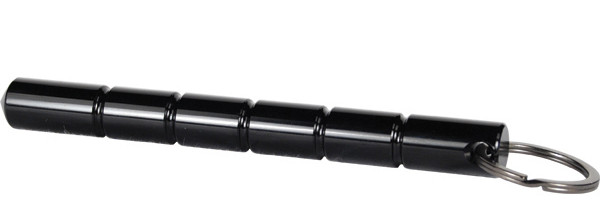 Striking Weapon - The Kubotan
Striking Weapon - The Kubotan